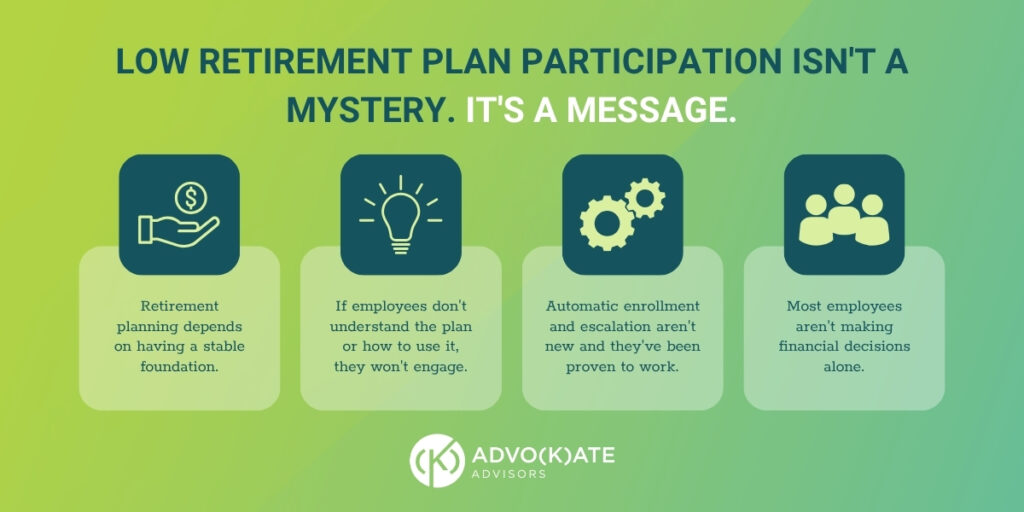When employees don’t join the retirement plan, it’s often not due to lack of interest. It’s because something is getting in the way. For many, that something is short-term financial stress. When bills are piling up or unexpected expenses hit, saving for retirement feels like a luxury they can’t afford.

Start With Stability
Retirement planning depends on having a stable foundation. A working budget and a basic emergency fund make long-term saving feel possible. Without that first step, participation stays low, no matter how strong the plan is.
Make Education Clear and Timely
If employees don’t understand the plan or how to use it, they won’t engage. And if education only shows up once, during onboarding, it’s likely to be forgotten. Ongoing education, offered in short formats, tied to real decisions, and even incentivized through raffles or drawings, helps the message stick.
Let the Plan Do Some of the Work
Automatic enrollment and escalation aren’t new and they’ve been proven to work. These features help employees get started, especially when they’re unsure or overwhelmed. Participation increases when the default path is simple and supportive.
Include the Decision Makers
Most employees aren’t making financial decisions alone. They’re talking it through with a spouse or partner, often after work hours. When plan education is designed to be viewed at home and shared with others, it becomes part of the conversation and part of the plan.
Ultimately, retirement plan participation improves when employees have a stable foundation, practical education and a clear path to start.

